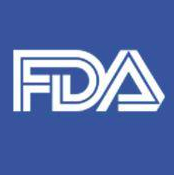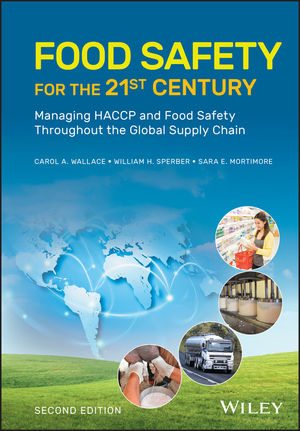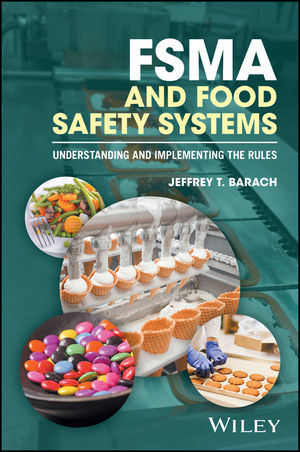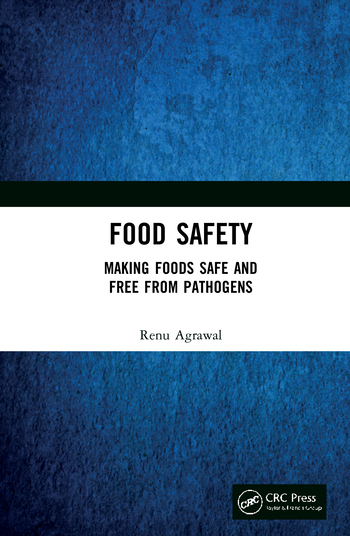The Value of Economics in Rulemaking: Examples From “The Egg Rule”

The U.S. Food and Drug Administration’s (FDA) Center for Food Safety and Applied Nutrition (CFSAN) is responsible for ensuring the safety and proper labeling of foods, cosmetics, and dietary supplements entered into interstate commerce in the United States. To meet this responsibility, CFSAN sometimes promulgates regulations to support the laws it is responsible for upholding. The impetus for developing the regulations can vary, but some of the reasons include congressional mandate, petition, and internal generation under statutory authority. A regulation can be narrow in scope, addressing only a few types of products, or broad in scope, addressing many types of products.
Some regulations involve processing requirements that manufacturers must follow in order to produce a safer product, while others provide for labeling that consumers can use to make more healthful dietary choices. Irrespective of what a particular regulation is designed to address, all regulations promulgated by the FDA using notice and comment rulemaking are required to include an economic analysis of the regulation’s impact on both the public health and industry. Good economic analyses enable policymakers to understand where the costs and benefits of a regulation lie and help them limit the regulation’s economic burden while still achieving the desired public health goal. At CFSAN, the task of economic analysis falls to the Economics Team in the Center’s Office of Regulations, Policy, and Social Science. This article provides an overview of the requirements for an economic analysis of proposed and final rules, describes the types of questions that CFSAN’s Economics Team attempts to answer, and presents a framework from which the value of economic analyses can be judged. To illustrate the effectiveness of an economic analysis, we revisit the 2009 final rule concerning Salmonella Enteritidis (SE) in shell eggs.
Requirements for Economic Analyses of Regulation
The requirements for economic analyses of proposed and final regulations, including direction on the necessary elements of analyses, are addressed by two Executive Orders and several laws. Executive Order 12866, signed in 1993, requires that agencies identify the need for regulation, including market failure or other specific problems; identify alternatives to direct regulation; analyze the alternative approaches to direct regulation; and assess both the costs and the benefits of the intended regulation. Furthermore, it states that an agency should “propose or adopt a regulation only upon a reasoned determination that the benefits of the intended regulation justify its costs.” The Office of Management and Budget’s Circular A-4 provides detailed guidance to agencies on how to perform the economic analyses required by Executive Order 12866. The analyses should use the best available data, be transparent in approach, and be clearly written.
Executive Order 13563, signed in January 2011, instructs[1] agencies to strike the right balance between what is needed to protect the safety and health of all Americans and what is needed to foster economic growth, job creation, and competitiveness. The basic tenets of Executive Order 13563 are to consider costs and how best to reduce burdens for American businesses and consumers; to expand opportunities for public participation and stakeholder involvement; to seek the most flexible, least burdensome approaches; to ensure that regulations are scientifically driven; and to review old regulations so that rules that are no longer needed can be modified or withdrawn.
The Unfunded Mandates Reform Act, the Small Business Regulatory Enforcement Fairness Act, and the Paperwork Reduction Act require that the analyses pay special attention to a regulation’s impact on state and local governments, economic growth, employment, job creation, exports, the regulatory effects on small business, and paperwork requirements, such as record-keeping or reporting.
Economic Analysis: What It Does and What It Involves
For the FDA, the purpose of an economic analysis is to learn about the fundamental health problem and the impact of regulatory action to mitigate the health problem. This includes determining which consumers are at risk, how they are put at risk, and what danger they might face by being put at risk. It also involves determining which segments of the industry will be affected by a regulation, quantifying the regulation’s impact on industry, and estimating the effect the regulation will have on public health. Analyses addressing all of these issues require substantial effort. It takes time and resources to gather the best available data, and it takes individuals with specific skill sets to successfully perform the analyses. For food, cosmetics, and dietary supplement issues, this effort is spearheaded by the CFSAN’s Economics Team. Once the Economics Team completes its analyses, their findings are subject to scrutiny both inside and outside the FDA. Senior CFSAN management, FDA’s Office of the Chief Counsel, the Office of the Commissioner, the Department of Health and Human Services, the Small Business Administration, and the Office of Management and Budget are all provided with the analyses and have the opportunity to query and request additional data to ensure that all the necessary economic issues have been sufficiently evaluated. The process is rigorous but worth the effort because the analyses provide decision-makers with a concise, logical summary and interpretation of the available data and science, explaining the implications of the regulatory and policy options.
Weighing Value
In a working paper, Stuart Shapiro and John Morrall laid out their plans for the Herculean task of evaluating the impact of cost-benefit analysis across time, regulations, and regulatory agencies.[2] They state that studies of the impact of economic analysis have been limited to case studies that either praise cost-benefit analysis for its potential to improve the economic efficiency of government regulation or criticize it as making it harder for agencies to issue regulations. In an attempt to develop a sort of meta-measure of the impact of economic analyses, they look at past regulations and compare the net benefits (benefits minus costs) 1) between final and proposed rules, and 2) between rules issued by agencies subject to Executive Order 12866 and rules issued by agencies that are not required to perform cost-benefit analysis. Their findings are mixed; they are unable to conclude that economic analyses positively impact net benefits in regulations.
This is expected. Regulations are issued for many reasons, and the economic analysis is but one input into the decision-making process, and in many cases, not the most important one. For example, the regulatory approaches adopted by a federal agency are always limited by the statutory authority that Congress has granted it. Additionally, a regulation written at a particular time or under a particular administration may have received a different level of scrutiny if it was written at a different time or under a different administration. In addition, some regulations, while important, efficient, and beneficial to the public, may simply have fewer measurable benefits or higher costs of implementation than other important regulations. These facts make it difficult to measure the impact of economic analyses by observing final net benefits across regulations, time, and agencies.
At the FDA, and in particular at CFSAN, economists are involved early in the rulemaking process and work together with the Center’s subject matter experts, scientists, and attorneys to develop a rule. Their analyses are utilized from the inception of regulation writing, and the true impact of the analyses can be measured by comparing the original concept for the regulation to the rule that is eventually published. To understand the impact of economic analysis on a regulation, regulations must be studied on a case-by-case basis rather than attempting to measure final net-benefits across regulations, time, and agencies.[3]
The remainder of this article focuses on a recent regulation for which the economic analysis had a large impact on policy decisions.
SE and “The Egg Rule”: A Brief History
SE infection is a significant problem in the United States. It is estimated that nearly 220,000 cases of SE infection occur in the U.S. each year, with more than 140,000 of those cases stemming from egg consumption. Most cases result in mild, short-lived gastrointestinal symptoms. However, SE infections can be severe and result in death, especially for the elderly, immunocompromised, and children. Finally, a small percentage of all SE infections result in chronic reactive arthritis.[4] Thus, SE infection stemming from egg consumption is a problem that is worthy of our attention in both the sheer number of illnesses as well as the potential severity of each illness.
In the mid 1980s, outbreaks of SE infection were linked to foods containing undercooked eggs. This prompted discussions between the FDA, the Centers for Disease Control and Prevention, the U.S. Department of Agriculture (USDA), industry, and academia and stimulated a great deal of research. By 1990, the FDA had classified eggs as a potentially hazardous food and provided guidance for the proper refrigeration and cooking of eggs in the Food Code. Throughout the 1990s, both the FDA and USDA passed regulations and issued guidance addressing the labeling of egg packaging, the refrigeration of eggs, and the handling of eggs served to susceptible populations. Furthermore, Congress funded the SE Pilot Project, which later became the Pennsylvania Egg Quality Assurance Program (PEQAP). PEQAP provided for voluntary participation in a program that outlined on-farm measures to reduce the prevalence of SE in the environment. Other states developed egg quality assurance programs of their own. Despite the success of the labeling, handling, and refrigeration regulations and guidance, and the significant voluntary participation in state-sponsored EQAPs, egg-related SE illnesses persisted.
It became clear that uniform national standards were necessary to combat the persistent problem of SE contamination in eggs. In 1999, the Clinton Administration published The Egg Safety Action Plan, calling for a 50% reduction in SE illnesses attributable to eggs by 2005, and the FDA began drafting a proposed rule outlining steps to prevent SE from contaminating shell eggs on the farm. In 2004, the FDA published a proposed rule and solicited comments from all interested parties. Five years later, in 2009, the FDA published the final rule that provided a set of national standards to ensure the safety of eggs.
The final rule has been generally praised by both industry and consumer groups. It provides more than $1.4 billion in annual human health benefits at a cost to industry of roughly $81 million per year. The costs, while far from trivial, are vastly outweighed by the benefit of preventing more than 79,000 egg-related illnesses per year. However, the final rule is significantly different from what was conceived in 1999, and the economists performing the impact analysis played a major role in its development.
The Data
SE in eggs is not a new issue, and the data available during the analysis of the shell egg rule were considerable. The vectors for SE in the environment and the link between SE in the environment and the rate of egg contamination have been studied for decades. Furthermore, the EQAP programs provided an opportunity to observe the efficacy of certain farm practices in reducing SE in the environment. The USDA’s Layers Study provided a rich snapshot of layer farm practices and attributes, enabling the economists to develop a solid pre-regulation baseline estimate. Finally, the USDA’s 2005 “Risk Assessment for Salmonella Enteritidis in Shell Eggs and Salmonella spp. in Egg Products” quantified the benefits of refrigeration.
The quality of the data available during the analysis of the shell egg rule allowed the economists to provide quick, precise analysis to policy makers in the FDA.
Where Economics Made a Difference: A Tale of Two Farm Size Categories
The final rule covers egg farms with 3,000 or more layers that either do not have all of their eggs treated or do not sell all of their eggs directly to consumers. This consideration amounts to roughly 3,300 farm sites. When writing the rule, the FDA considered the option of covering farms with fewer than 3,000 layers and the option of exempting farms with fewer than 20,000 layers. It was the economic analysis that played a large part in the decision to apply the rule only to farms with 3,000 or more layers.
Farms with fewer than 3,000 layers.
One regulatory option was to cover all farms regardless of size. This option made sense in that it covered all eggs sold into the table egg market to ensure the greatest amount of health impact.
Thanks to the richness of the data, the economists were able to analyze both the costs and health benefits of the rule broken down by the following farm sizes: fewer than 3,000 layers, 3,000 to 19,999 layers, 20,000 to 49,999 layers, 50,000 to 99,999 layers, and 100,000 or more layers. Early analysis showed that there were roughly 46,000 farm sites with fewer than 3,000 layers5 and that these very small farms would have difficulty complying with the proposed rule and continuing business. The analysis suggested that many of the smallest farms would either cease production or only sell eggs directly to consumers. A more rigorous analysis showed that the annual costs to the farms with fewer than 3,000 layers would be more than $115 million, or nearly $4 per dozen eggs produced.
The cost for covering these farms was substantial, but a compelling argument to exempt the smallest farms lay on the benefits side of the equation. The 46,000 smallest farm sites represent less than 1 percent of all egg production in the United States and account for about 550 SE illnesses per year; this figure is compared to more than 79,000 SE illnesses related to the remaining 3,300 farm sites. Excluding the very smallest farms from the provisions in the final rule cut the annual societal costs by more than half, while reducing the health benefits by only a fraction of a percent. This caused the net benefits to increase by more than $100 million annually.
Consideration was given to regulatory options exempting the smallest farms from all provisions of the rule, except for the most basic ones, such as refrigeration. In each case, the economic analysis showed that the cost was substantial and the health benefits that could be derived by any coverage at all on the smallest farms were negligible. So the regulatory option of applying any provisions to the smallest farms was not chosen for the final rule in large part due to the economic analysis.
Farms with 3,000 to 19,999 layers.
The FDA also considered exempting farms with fewer than 20,000 layers. The cost to farms with 3,000 to 19,999 layers of the final rule is relatively high, about $1.00 per layer versus about $0.50 per layer in the next largest category. The $1.00 per layer cost of the rule would make it difficult for some farms on the smaller end of the 3,000-to-19,999-layer range to comply. However, unlike the negligible health benefits attributable to the coverage of the very smallest farms, the economic analysis showed that coverage of farms with 3,000 to 19,999 layers would provide extensive human health benefits.
There are about 1,750 farms affected by the rule in the group of farms with between 3,000 and 19,999 layers. These farms make up about 7.7% of domestic egg production. FDA economists estimate that this group of farms is responsible for nearly 6,500 SE illnesses, which, if eliminated, would result in nearly $115 million in savings for society. While the $21 million cost of the rule to this group of farms is significant, policy makers decided that the benefits from protecting an additional 7.7% (nearly 6 billion eggs) of the nation’s egg supply and avoiding 6,500 SE illnesses per year outweighed the additional costs to both the industry and consumers. To alleviate some of the adverse financial burden of the rule on this group of relatively small farms, the FDA allowed an additional 2 years for farms to comply with the provisions of the final rule and is supplying guidance to assist in compliance with the rule.
Value added.
In one case, the economic analysis showed where the rule could be trimmed a great deal without losing much in health benefits. In another case, the analysis showed that increasing the number of farms exempted from the rule would result in lost health benefits that were too great to justify the cost savings. Would policy makers have come to the same conclusions without the aid of the economic analysis? Possibly, but not necessarily, nor even likely. While the economic analysis was far from the only input into the decision to exempt farms with fewer than 3,000 layers and to include farms with 3,000 or more layers, the data gathered and analyzed by the economists told a clear story for FDA policy makers on which to base their decision. The economists had a significant impact on this rule, and the result is a leaner, more beneficial policy.
What Do We Get for That?
Does an economic analysis lead to better regulation? Yes. Regulatory economists consider both the costs and benefits to human health. We attempt to study all the available information pertaining to both consumers and industry, for both existing as well as potential regulation. Perhaps most importantly, for each potential provision of a regulation, economists ask the question, “What do we get for that?” As simple as it sounds, it can be an incredibly powerful question. For all the proposed restrictions, mandates, etc., what exactly is gained in terms of healthier people in the United States? Both the asking and answering of this question enables us to trim millions off the societal cost of a regulation without leaving significant health benefits still on the table. This process can also justify the inclusion of a provision with large public health benefits that may have otherwise been omitted had we only looked at the costs.
Asking “What do we get for that?” both early and often, and answering this question through economic analyses, make for better regulation in ways that cannot be measured by simply observing the quantified net benefits between different final rules or even between proposed and final rules.
Brad Brown, Ph.D. is an economist and a member of the Economics Team in CFSAN’s Office of Regulations, Policy, and Social Sciences. He has worked for the FDA for 8 years.
Sebastian Cianci is a policy analyst and a member of CFSAN’s Office of Food Defense, Communication, and Emergency Response. He has worked for the FDA for 20 years and serves as the Center’s trade press liaison.
Notes:
1. Executive Order 13563 was signed after “The Egg Rule” was published so the economic analyses for the rule were driven by the other requirements spelled out in the article.
2. Shapiro, S. and J. Morrall. 2009. Evaluating the impact of cost-benefit analysis. Talk presented at the Society for Risk Analysis annual meeting in Baltimore, MD.
3. Shapiro and Morrall do consider particular case studies in their research, but did not present the results in the 2009 presentation.
4. 21 CFR Parts 16 and 118. Prevention of Salmonella Enteritidis in Shell Eggs During Production, Storage, and Transportation.
5. There are actually more than 90,000 farm sites with fewer than 3,000 layers, but it had already been determined that the farms that sold directly to consumers would be exempt from the provisions of the rule.
Looking for a reprint of this article?
From high-res PDFs to custom plaques, order your copy today!








